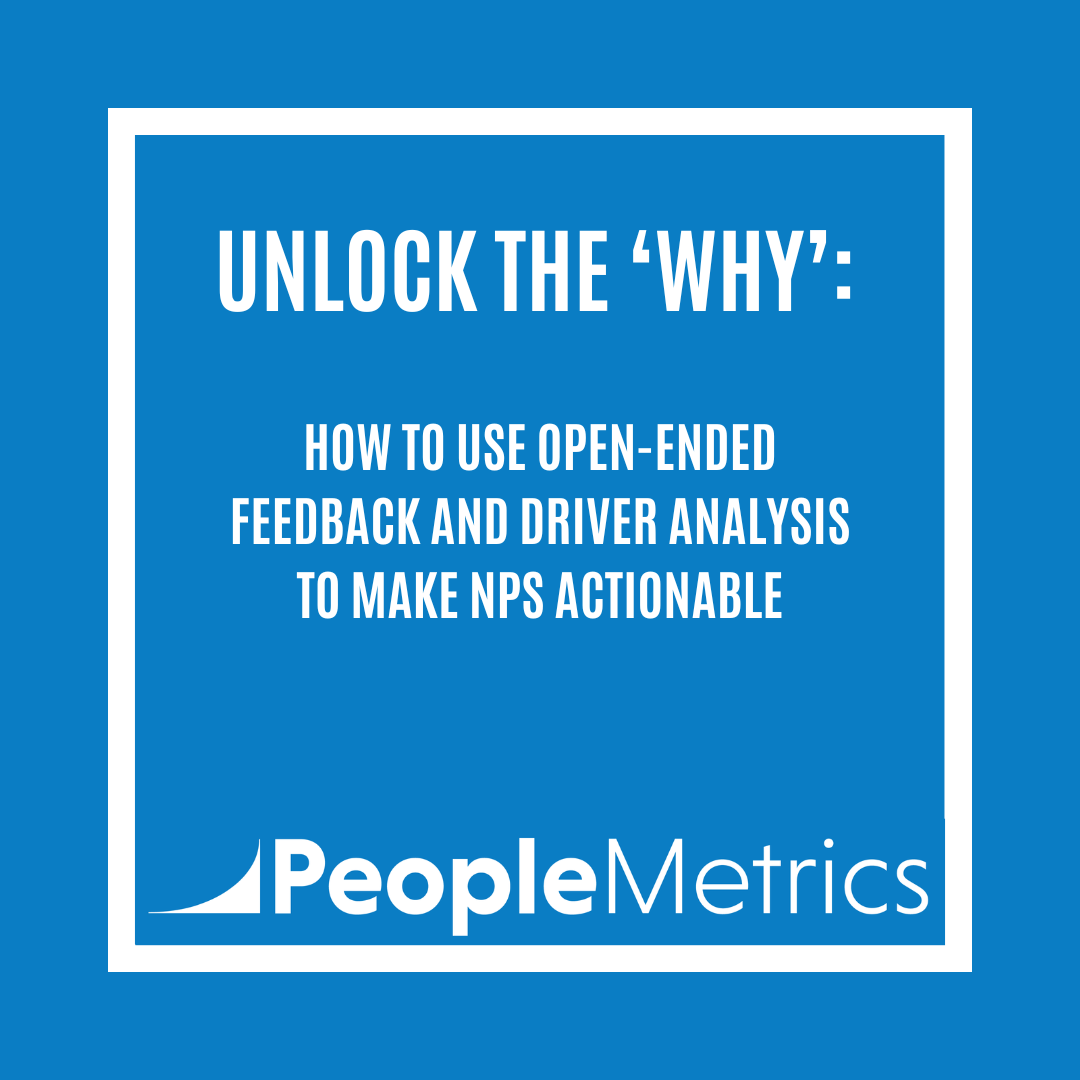You’ve designed your NPS survey. You’re asking the right customers, at the right time, in the right way.
But what do you do with the results? Too many teams stop at reporting the NPS score. They miss the real point: the NPS score is only the signal, the “why” behind the score is what drives real action.
If you want to move up the curve, from Foundational to Mature and eventually Elite, you need to capture, analyze, and share the NPS insights from your customers.
Why the NPS Score Alone Isn’t Enough
My favorite analogy for NPS is to think of it as a bank account balance. It tells you if you’re in good standing, but it doesn’t tell you which transactions are making you richer or poorer.
Your customers are telling you exactly where to improve, if you take the time to listen and decode it.
Ask the Right Open-Ended Questions
Too many companies tack on a generic comment box after the NPS question: “Why” or “Do you have any other feedback?” That’s a missed opportunity.
Practical example: An insurance company we work with switched from “Why?” after NPS to:
- Promoters: “What do you value most about working with us?”
- Passives: “What could we do better to earn your strongest recommendation?”
- Detractors: “What’s the biggest thing we should fix to make you more likely to recommend us in the future?”
Just that change made their open-ended feedback actionable and specific to each NPS segment. Instead of a list of vague complaints or praise, they saw clear, repeated patterns and they knew where to start.
How to Analyze Verbatim Comments
You don’t need fancy AI or text analytics to start examining open ended comments, though it can help once you’re scaling.
Begin by reading through a sample (50 to 100) of the open-ended comments and identify common themes such as:
- Service issues
- Product quality
- Value for money
- Digital experience
Practical example: A retail chain noticed that 80% of Detractors mentioned “slow returns” as a key theme. Their NPS was fine overall but if they hadn’t coded the comments, they wouldn’t have spotted how much the returns process was hurting loyalty.
Next, break down your themes by:
- Region or store
- Product category
- New vs. repeat customers
The best insights happen when you cross themes with segments.
Use Driver Analysis to Find What Really Matters
Another way to get to the “why” is to look at the relationships in your data statistically.
Driver analysis is just a fancy way to say: run a regression or bivariate correlation with NPS as the dependent variable and your key experience attributes (e.g., ease of doing business, product quality, speed of service) as the independent variables. Those with the highest beta coefficients or correlations are “drivers” of NPS.
Practical example: One B2B SaaS company assumed “price” was their biggest loyalty driver because people mentioned it often in open ends. But when we did a driver analysis, we found “implementation support” had a stronger statistical link to NPS. So, they invested in training their customer success teams and their score moved.
The point: what people say and what moves the needle aren’t always the same. Use both to prioritize what to fix.
Make Insights Actionable
- Share clear summaries: “Here are the top 3 themes hurting our NPS this quarter.”
- Tie feedback to ownership: “This theme is linked to our onboarding team, here’s how we’ll address it.”
- Re-measure: fix root causes, then track how your NPS changes. Show the link between action and impact.
Practical example: A regional bank analyzed Detractor feedback about branch wait times being too long. They piloted extra weekend staff in the worst scoring locations and then watched branch-level NPS go up by 12 points. Small insight, big impact.
Checklist: Moving from NPS Score to Actionable Insights
Before you move to the next level, ask yourself:
- Are we branching our open-ended questions for better context?
- Do we regularly code and analyze verbatim comments for themes?
- Do we look at segments (product, region, customer type) to spot patterns?
- Do we run driver analysis to find what really impacts NPS and customer loyalty?
- Are these insights shared with the people who can act on them?
Up Next
Your score is only the start. Your “why” is the story. In the next post, we’ll talk about how to share NPS results inside your company, so people care, trust the data, and feel motivated to act.





